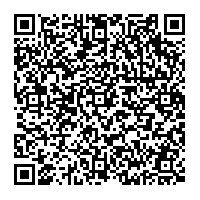Computer Programming and Readability Scoring Tests between Arabic and English of Surat Al-Fātiḥah
DOI:
https://doi.org/10.25255/jss.2020.9.4.1543.1558Keywords:
computer programming, translation, readability, English, Arabic, holy script, QuraanAbstract
The present paper investigates computer programming of the readability feature in Al-Fatihah (Arabic: ٱلْفَاتِحَة), the first chapter (Surah) of the Quraan, with its English equivalent and whether the different statistics scores of readability may affect the translation’s value of the holy text (Al-Fatihah) compared to its target text equivalent. This paper uses the computer programming of readability tests. It uses different formulas as (i) Flesch Kincaid Reading Ease; (ii) Flesch Kincaid Grade Level; (iii) Gunning Fog Score; (iv) SMOG Index; (v) Coleman Liau Index; and (vi) Automated Readability Index. These formulas identify the easiness of the source text compare to the translated text (target text). This study identifies the readability scores that may affect the translation text compared to the source text. The study reveals that the readability scoring tests between Arabic (ST), Arabic –Latin (Transliteration), and the target text (TT) English version of Surat Al-Fātiḥah from The holy Book Al Quraan are different. The ST is much easier to read by their audience than the TT readers. It also affirms that the translating process may cause slightly changes in the TT compared to the ST ones. Finally, the lack of knowledge of such computer software during the translating process may increase or decrease the complexity of the text for readers.
Downloads
References
Al-Tamimi, A.-K., Jaradat, M., Aljarrah, N., & Ghanim, S. (2014). AARI: Automatic Arabic Readability Index. The International Arab Journal of Information Technology, 11(4). Retrieved from https://pdfs.semanticscholar.org/2108/606f5fd2daa9607df780d023efbc801ccbe3.pdf
Ansell, M. (2000). Free English Grammar. P25.
Bani Abdo, I. (2017). Stylistic issues in two Arabic translations of Hemingway's A farewell to arms. Noor Publishing.
Bani Abdo, I., & Abu-Faraj, B. (2019). The Effects of Canonity and the Authorial Weight in Translating Dickens’ Oliver Twist into Arabic Language. Journal of Social Sciences (COES&RJ-JSS), 8(4), 788–804. doi: 10.25255/jss.2019.8.4.788.804.
Bani Abdo, I., & Abu-Hammad, I. (2019). Stylistics Issues in Translating Metaphors of Shakespeare’s Merchant of Venice. Merit Research Journal of Education and Review, 7(3), 19–25. doi: 10.5281/zenodo.2616829. Available online http://meritresearchjournals.org/asss/index.htm.
Bani Abdo, I., & Awwad, M. (2019). Effectiveness of Translating English Technical and Scientific Terms by Arabicization Strategy in Al-Oloom Ll-Omoom Magazine and Syrian Researchers Network on Reader’s Understanding. International Journal of Comparative Literature and Translation Studies, 7(2), 39-48. doi: 10.7575/aiac.ijclts.v.7n.2p.39.
Bani Abdo, I., & Yaseen, B. S. (2019). Translating Equivalence of Gibran Khalil’s Style in TT: English into Arabic. Merit Research Journal of Education and Review, 7(3), 11–18. doi: 10.5281/zenodo.2616835. Available online http://meritresearchjournals.org/asss/index.htm.
Bani Abdo, I., & Yaseen, S. (2019). A Cultural Contrastive Translation Study of Omission in Gibran’s the Broken Wings. Journal of Social Sciences (COES&RJ-JSS), 8(4), 805–816. doi: 10.25255/jss.2019.8.4.805.816.
Coleman, Meri; and Liau, T. L. (1975); A computer readability formula designed for machine scoring, Journal of Applied Psychology, Vol. 60, pp. 283–284.
Coleman-Liau Index (2008). Retrieved May 6, 2008, from UsingEnglish.com: www.usingenglish.com/glossary/coleman-liau-index.html
Dickins, J. and Watson, J.C.E. 1999. Aural Arabic texts. Cambridge: Cambridge University Press.
DuBay, W. H. (2004). The Principles of Readability. S.l.: Distributed by ERIC Clearinghouse.
DuBay, W. H. 2006. Smart language: Readers, Readability, and the Grading of Text. Costa Mesa:Impact Information.
Flesch, R. (1948). A new readability yardstick. Journal of Applied Psychology, 32, 221-233.
Fry, E. 2002. Readability Versus Leveling. The Reading Teacher 56 (3), 286-291. Gilliland, J. 1972. Readability. London: University of London Press Ltd.
Gillard, D. (2019). Bullock Report (1975). Retrieved from Educationengland.org.uk website: http://www.educationengland.org.uk/documents/bullock/bullock1975.html
Gunning, R. (1952). The technique of clear writing. New York: McGraw-Hill.
Gunning, Robert (1952). The Technique of Clear Writing. McGraw-Hill.
House, J. 1981. A model for translation quality assessment. 2nd ed. Narr: Tu¨bingen.
Kincaid, J.P., Fishburne, R.P., Rogers, R.L., & Chissom, B.S. (1975). Derivation of new readability formulas (automated readability index, fog count, and flesch reading ease formula) for Navy enlisted personnel. Research Branch Report 8–75. Chief of Naval.
Kirkwood, K. J., & Wolfe, R. G. (1980). Matching students and reading materials: A cloze-procedure method for assessing the reading ability of students and the readability of textual materials. Toronto: Ontario Department of Education. (ERIC Document Reproduction in Service No. ED 195 928)
Kondur, J. (2006). Using part of speech structure of text in the prediction of its readability. Unpublished master's thesis, University of Texas, Arlington, U.S. Retrieved November 13, 2008, from http://proquest.umi.com/pdqweb?did=1216761731&sid=1&Fmt=2&clientld=46449&PQT=309&VName=PQD
Lively, B. A., & Pressey, S. L. (1923). A method for measuring the vocabulary burden of textbooks. Educational Administration and Supervision Including Teacher Training, 9, 389-398.
Maihobi, W. (2010). Wholesale Arabic Grammar and Contemporary Linguistics,13-13. Retrieved 2010, from http://mohamedrabeea.net/library/pdf/6f2e002f-9e58-42d8-a780-e79f4cf48198.pdf
McLaughlin, G. H. (1969). SMOG grading: A new readability formula. Journal of Reading, 12(8), 639-646.
McLaughlin, G. Harry (May 1969). "SMOG Grading — a New Readability Formula" (PDF). Journal of Reading. 12 (8): 639–646. Retrieved 2018-04-26.
Newmark, P.(1988). Textbook or translation. London: printing Hall International.
Oxford English Dictionary Online. . [Accessed on 27 April 2010.] Readability Test Tool. (n.d.). Retrieved from https://www.webpagefx.com/tools/read-able/Technical Training: Naval Air Station Memphis.
Zamanian, M., & Heydari, P. (2012). Readability of Texts: State of the Art. Theory and Practice in Language Studies,2(1). doi:10.4304/tpls.2.1.43-53.











 a Creative Commons Attribution 4.0 International License.
a Creative Commons Attribution 4.0 International License.

